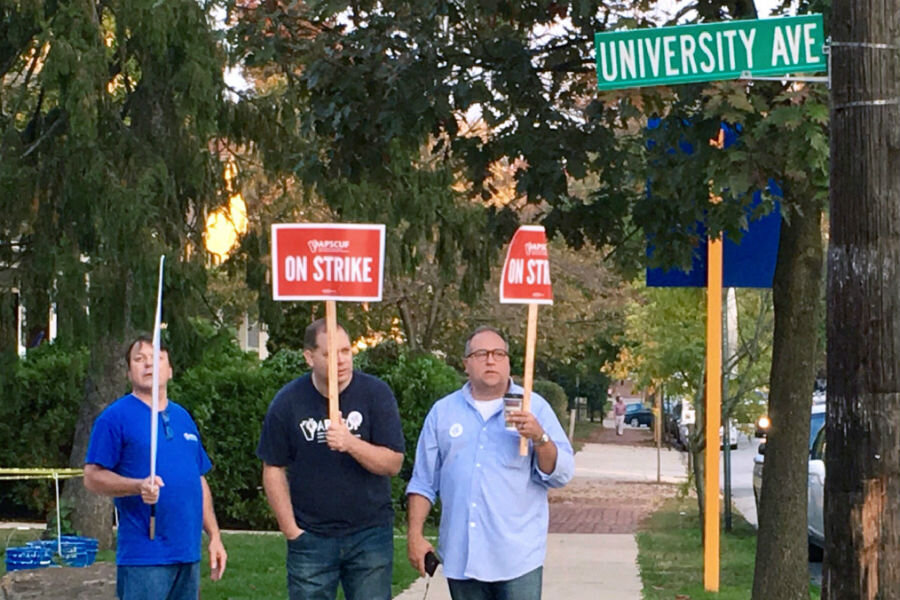Why thousands of Pennsylvania State faculty members are on strike
Loading...
College classrooms and practice fields across the state of Pennsylvania sat empty on Wednesday morning as more than 5,000 faculty and coaches went on strike, forming picket lines on campuses, chanting, and waving signs.
Members of the Association of Pennsylvania State College and University Faculties (APSCUF) union officially began their strike, as planned, at 5 a.m., following unsuccessful attempts the night before by the APSCUF and the Pennsylvania State System of Higher Education to reach an agreement on a new contract.
The two bodies had previously managed to agree on some issues, such as professional responsibilities outside the classroom and faculty recruitment and retention strategies, State System spokesman Kenn Marshall told the Associated Press. But the two sides were unable to settle on proposed salary raises and changes to health care coverage for faculty.
The strike marks the first of its kind in the state system's 34-year existence, though there have been a number of faculty strikes at colleges and universities across the country – some effective; others not so much – since the start of faculty unionization as we know it in the 1960s.
Strikes are typically symbolic moves, and faculty strikes, in particular, tend not to last very long, according to Richard Boris, former director of the National Center for the Study of Collective Bargaining in Higher Education and the Professions at Hunter College of the City University of New York.
But, he told Inside Higher Ed in 2011, the nature of strikes has changed in recent years due to financial constraints on universities.
"Strikes are different now because the level of frustration is different," Dr. Boris said. "Ten years ago, strikes were limited in their focus – mainly on the condition of employment. There are new tensions now as colleges are pushed to find new sources of income."
Prior to the breakdown of talks between APSCUF and the state, Pennsylvania Gov. Tom Wolf warned that a strike or similar move "could drive a loss of students, which would further exacerbate an already precarious financial situation for the state system," as reported by NBC News.
Both the Pennsylvania state system and the faculty union expressed a desire to end the strike as quickly as possible for the sake of the students at the system's 14 schools.
"We are headed to the picket lines, but even on the picket lines, our phones will be on, should the State System decide it doesn't want to abandon its students," said APSCUF President Kenneth Mash said in a statement, as reported by the Associated Press.
The 105,000 students affected have been instructed to attend classes and carry on as if the strike was not happening, as some professors are not on strike. Some professors who walked out provided students with advance assignments prior to Wednesday morning.
"The expectation is students should be working," said university spokeswoman Nancy Gainer to the Associated Press. "We're very hopeful negotiations between PSSHE and APSCUF will be fruitful, and should (the strike) only last a few days or weeks, we are very hopeful we will make up any missed classes and work and find the alternative means for students to do so."
The strike does not affect the three largest public schools in the state – Pennsylvania State University, the University of Pittsburgh, and Temple University – which are part of the other state-funded university system, the Commonwealth System of Higher Education.








